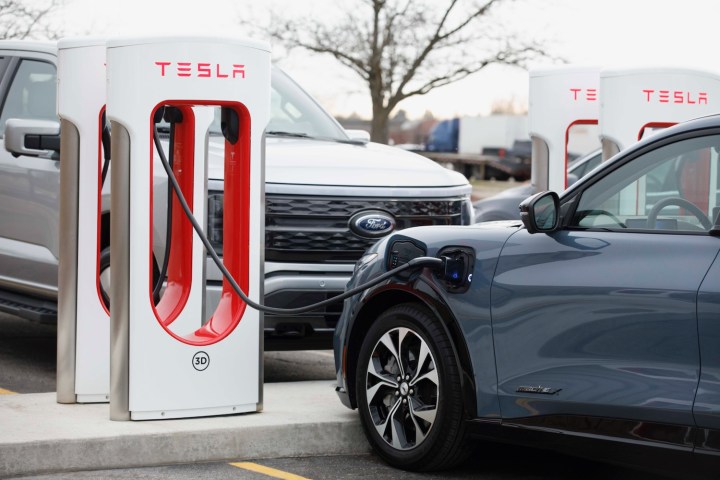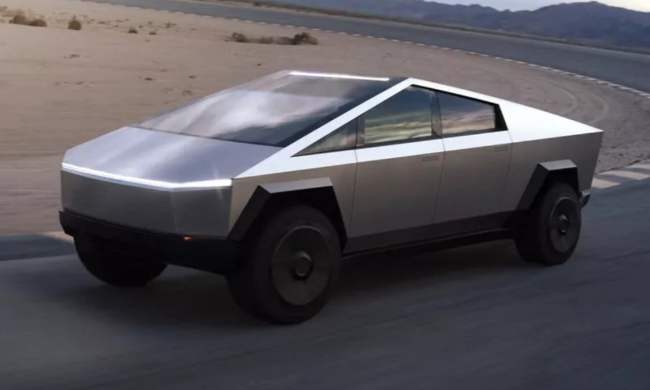
Ford announced last year that it would adopt the Tesla North American Charging Standard (NACS) for EV fast charging, granting Ford drivers access to the Tesla Supercharger network. Now, the automaker is providing a little more detail on exactly how that will work.
In the original May 2023 announcement, Ford said owners of existing EVs — which use the Combined Charging Standard (CCS) instead of NACS — would be able to charge at Supercharger stations via an adapter. Today, the automaker announced that the adapter developed by Tesla is now available to order. EV owners can order one free adapter per vehicle through Ford’s website between now and June 30. The adapter will otherwise retail for $230. Ford plans to begin building new vehicles with NACS connectors in the near future.
As explained to Digital Trends and other media in a briefing before the announcement, the adapter slips over a Supercharger’s connector and plugs into the vehicle. Ford says its vehicles will be able to charge at their maximum speeds using the adapter, which has an interlock device to prevent it from being disconnected while plugged into a vehicle. A latch can also deactivate charging if the adapter becomes separated from the Supercharger. Built-in temperature sensors are designed to prevent overheating.
Ford customers won’t be able to use every Supercharger station. Compatibility only applies to V3-and-newer Superchargers, and even some of those stations won’t be available to Ford drivers initially. But the automaker still claims it will offer access to 15,000 Supercharger stations in the U.S. and Canada. That’s more than the previous estimate of 12,000, reflecting the expansion of the Supercharger network since the original announcement was made last year, according to the automaker.
The added Supercharger stations will more than double the approximately 13,000 stations available on Ford’s Blue Oval Charge Network, the collection of third-party, public charging stations that Ford customers have streamlined access to. As with other Blue Oval Charge Network stations, Superchargers will appear (with pricing) in searches on the Ford Pass app or in-vehicle charging locators, and customers will be able to simply plug in and charge using Ford Pass or the Plug and Charge protocol.
Since Ford announced plans to adopt the Tesla NACS connector and use the Supercharger network, most other major automakers have followed suit. But Ford is the only one so far to put its plan into action — even if it’s just via adapters for now.


